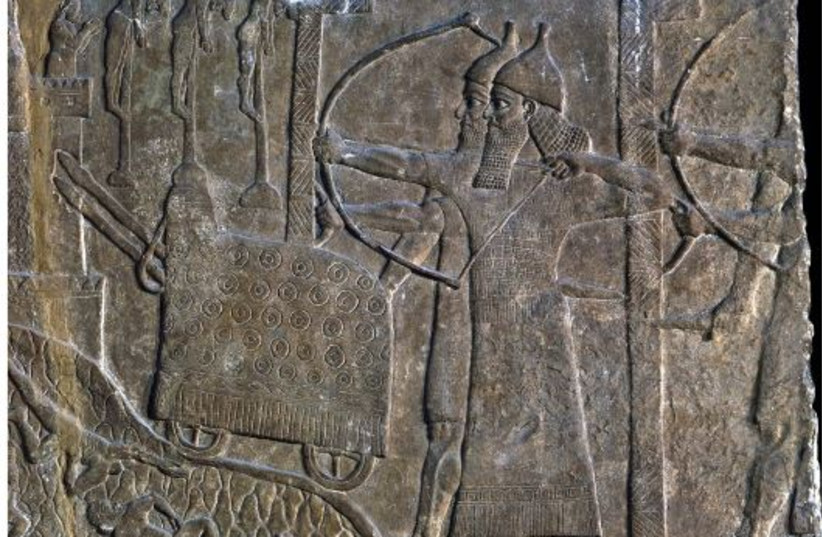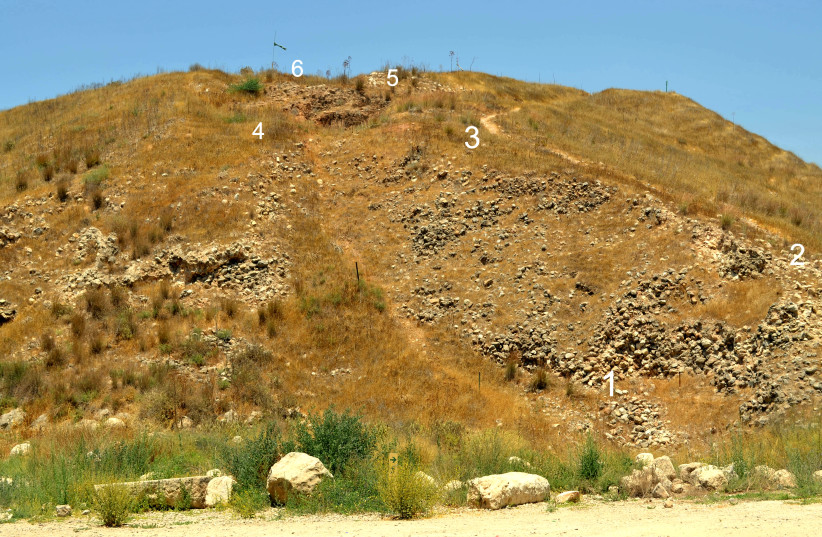ROSSELLA TERCATIN
Archaeologists uncovered how King Sennacherib’s army built the massive siege ramp that allowed them to defeat the city some 2,700 years ago.
 Siege scene with two massive L-shaped shields protecting Assyrian soldiers, in a relief from the palace of Tiglath-Pileser III at Nimrud
Siege scene with two massive L-shaped shields protecting Assyrian soldiers, in a relief from the palace of Tiglath-Pileser III at Nimrud
(photo credit: Courtesy of the British Museum)
About 2,700 years ago, Assyrian King Sennacherib conquered the Judean city of Lachish in one of the most documented battles of ancient history, as described in the Bible, in Assyrian records and even in artwork that has survived until today.
A group of Israeli and American archaeologists have now shed light on how that dramatic war was conducted, specifically how the conquering troops built the siege ramp that allowed them to capture the city. The results of their research, which combined analysis of the biblical and historical sources with the study of archaeological remains and the landscape, were recently published in the Oxford Journal of Archaeology.
“In the fourteenth year of King Hezekiah, King Sennacherib of Assyria marched against all the fortified towns of Judah and seized them,” reads a passage from the 36th chapter of the Book of Isaiah. “From Lachish, the king of Assyria sent the Rabshakeh, with a large force, to King Hezekiah in Jerusalem.”
“The area had already emerged as a clear site of a battlefield,” said Hebrew University of Jerusalem Prof. Yosef Garfinkel, lead author of the paper. “The top was excavated around 40 years ago and hundreds of flint stones and arrow heads were found. In addition, around 40% or 50% of the ramp has survived. Now we understand how it was built.”
In order to achieve the result, the researchers developed a theoretical model and then checked it against the evidence, employing techniques such as the photogrammetric analysis of aerial photographs to create a detailed digital map of the relevant landscape.
Once a prominent Canaanite city, according to the biblical text, Lachish was among the centers conquered by Joshua after the Israelites entered the Land of Israel. It later became an important city of the Kingdom of Judah, second only to Jerusalem.
A vivid depiction of its siege at the hands of the Assyrians in 701 BCE is offered by several stone panels found in a palace in the Assyrian capital of Nineveh, which portray the battle and the warfare technique used – weapons but also the siege ramp and the battery rams – which allowed the conquering army to breach the city wall.
“In order to build the ramp, the Assyrians could have used either sediment or stones,” Garfinkel said. “However, containers are needed in order to move sediment, which was not very practical, while a stone can be passed from a man to another very quickly.”
 The six locations on the Assyrian siege ramp where stones were retrieved and weighed in Lachish (credit: Dr. M. Pytlik)
The six locations on the Assyrian siege ramp where stones were retrieved and weighed in Lachish (credit: Dr. M. Pytlik)
The Assyrians, however, needed an incredible amount of boulders in order to build such a massive structure.
“At the side of the cliff, we found a quarry,” the archaeologist noted.
Researchers estimated that the ramp was built using some three million stones, weighing on average around 6.5 kilos each.
“I believe that at least 1,000 men worked for the project,” Garfinkel said.
These men were likely not soldiers but rather prisoners of war, forced to labor around the clock to complete the siege ramp. According to Garfinkel, some 160,000 stones were passed in a human chain each day and the project could have taken as little as 25 days.
“In ancient times, wars could not be waged in winter, so the Assyrian army was in a rush to conclude their campaign in the summer months,” Garfinkel said.
In order to ensure that Lachish’s defenders would not be able to prevent the construction of the ramp, the work likely began some 80 meters from the wall, with the workers progressively building higher and dumping the stones down to move forward.“
This way, they could only be targeted from the city in the last few meters,” Garfinkel said.
When the ramp was completed, the Assyrian army breached the city wall with heavy battery rams, disseminating death and destruction.
For the future, Garfinkel is hoping to conduct further excavation in the quarry area in Lachish, at the far edge of the ramp, to find further material to shed light on Assyrian warfare techniques.
 13 unexpected things you can find at Tel Aviv’s wild and weird Central Bus Station
13 unexpected things you can find at Tel Aviv’s wild and weird Central Bus Station





